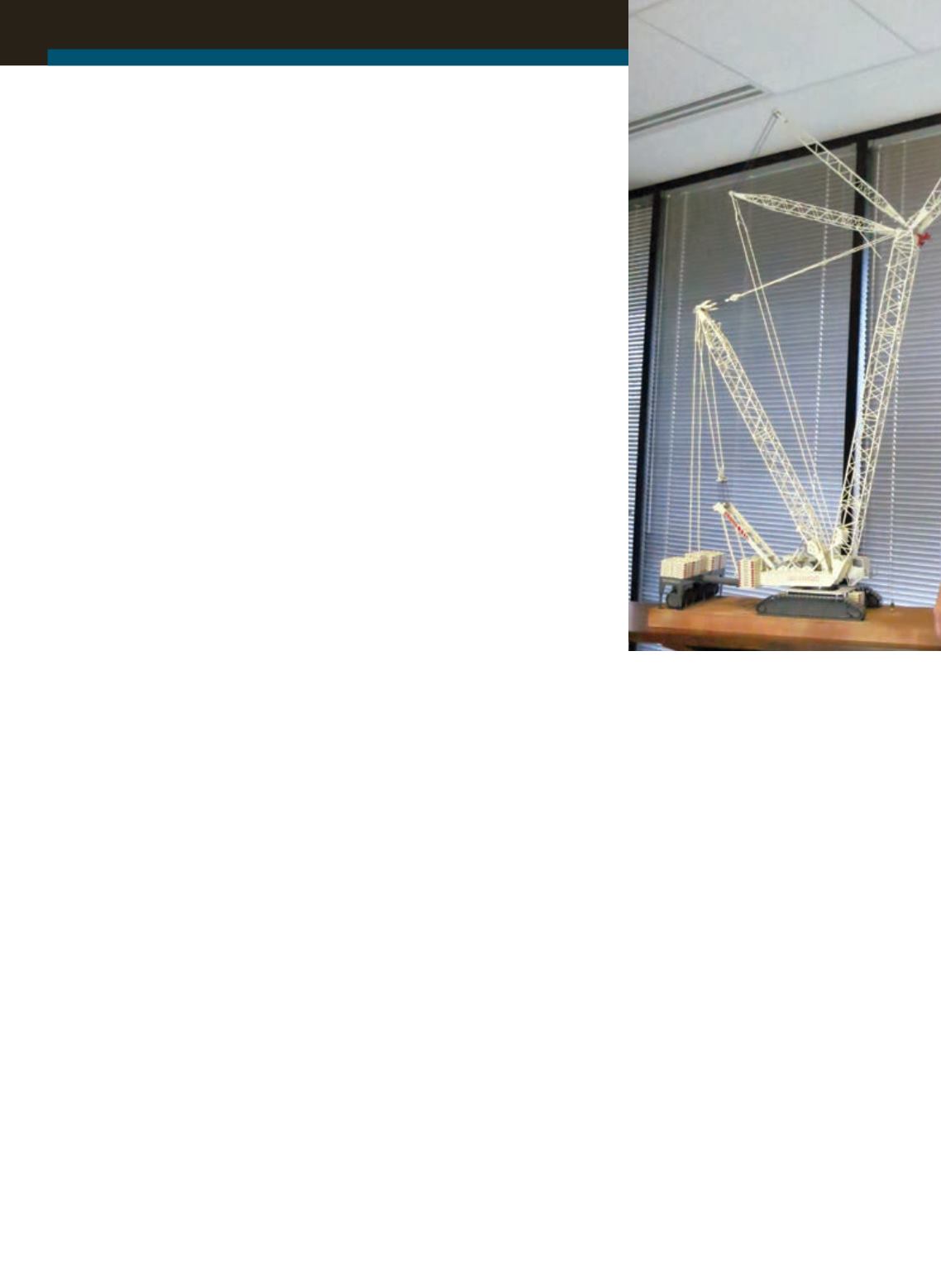
26
ACT
JANUARY 2015
INTERVIEW
require transportation infrastructure
planning. It’s apeoplemovinggoods
movement.Our ability to transport goods
is archaic in this country.Ourportsneed
upgradingandour ability toconnect our
keyproducing locationswithourports is
outdated. Soweneed toplan those things
andplanning requires acollaborationwith
thegovernment.We sometimes forget
that collaborationdrivesprosperity, not
conflict.Manyotherdevelopingcountries
understand to facilitate jobs andcommerce
youneed collaboration. In this country
webelievebusiness isn’t always a force
for good, but for themost part it is, and
weneedagovernment that understands
andhelps achieve this, not stand inour
way.Wearenowon thevergeof havingan
economiccompetitiveadvantage through
lowenergycosts.Our governmentneeds
to lean into that, not control it and regulate
it.Theseare thekindsof things thatwill
driveour infrastructure investment.
Ports areahugepart of this.Whatwe
need is toarticulatewhat the country
is going to look like.What shouldour
airports look like?What should rail
systems forpeopleand freight look like?
Wehave toarticulatewhatwewant tobe
as anation. Infrastructure should support
our vision, not develop it.
in termspeoplecanunderstand. Jobs,
transportationdelays, increasedcosts
to theeconomyand safetyconcerns.
Everyone in the industryneeds to stepup
andbecounted.Youknowwe talkabout
trafficand theweatheron thenews. Butwe
cando somethingabout the traffic.Weare
not able todoanythingabout theweather,
andyetwe fail to remember that changing
outcomeswith infrastructureplanning
is somethingour forefathersdidwith
creativityandvision.
Whatweneed is abetter visionof
tomorrowbecause, as Ihave saidbefore, I
feel like I’mpart of auser generationand
we’veused it all up.Wearenot using [our
infrastructure]withavisionofwhat 2050
should look like.Do Ihaveavested interest
in seeing that happen?Absolutely, and
wherevested interests and improvements
come together, improvement shouldbe
created.
Weonlyneed to look toother countries
andourhistory to seeevidence that
infrastructure investment equals economic
prosperity. It’s time testedandworks in
everycountry. Inhistory, youcan see
evidence that infrastructure investment
equals improvement ineconomicactivity.
DO YOU THINK THENEWU.S. CONGRESS
WILL CREATE THE LEGISLATIONNEEDED TO
ADDRESS INFRASTRUCTURENEEDS?
Likeanypatient that’sbeenwounded,we
need toget thepatient healthyagain.We
need to repair andmaintainour existing
infrastructure.Youknow thegradeson
bridges in this country; over60,000bridges
aren’tmaking thegrade.Whatweneed to
get theHighwayBill funded is auser fee
increase, probably15cents agallon. So
the totalwouldgo to33.4 cents agallon.
That gets the funding toget infrastructure
maintained.Weneeda six-yearbill, and
simultaneouslyweneed to look to the
states that are testingdifferent approaches
that are less gasolinedependent.The
amount of gasolineconsumed is going
down.Weare seeing thepreponderanceof
alternative fuel cars.Weneed to findother
fundingalternatives.Wecan’t continue
to sacrifice today’s infrastructure funding
untilwecomeupwith those funding
alternatives.That’s JobOne.
JobTwo isnot theHighwayBill’s
responsibility, but it is leadership to
articulateabetter vision forAmerica in
2050andbeyond;weareworkingon
that atAEM.TheU.S. is acollectionof
economic zones and those zones cross
stateboundaries.Thereareclear economic
zones around thecountry, and those zones
WHATNEEDS TOHAPPEN FOR THE
CONSTRUCTIONMARKET, ANDSPECIFICALLY
THE CRANEMARKET, TOREALLY TAKEOFF IN
NORTHAMERICAANDOTHERPARTSOF THE
WORLD?
WeneedgreaterGDPgrowth,which
drives all investment decisions. I’mhopeful
thecurrent priceof oilwill act as a tax
cut anda stimulus for theeconomy. Even
though I’m inmanufacturing,weneed
to remember thatmore than two-thirds
of theeconomy is serviceandconsumer
based.Withmoney in theirpockets, the
evidenceusually suggests that spending
will increase.
Thatwill eventually showup in the
economyandGDPwill increase,which
will increasepeople’sdesire to invest
inappliances, housing, and the like. It’s
historicandpredictableandwithout 3 to
4percentGDPgrowth theeconomywill
languishandmiddleclass incomeswill
remain threatened. [Middleclass incomes]
ultimatelydriveGDPgrowth.
Morepreciselyas it relates toour
industry,weneeda longer termvision,
coupledwith somepolitical courage.
Regardingour infrastructure,
domestically, I’mnot convincedwewill see
a lot of either. Butweneed it.TheHighway
Bill that hasbeen inplace for acoupleof
years iswayunderfunded.Thegasoline
tax, oruser fee, of 18.4cents agallonhasn’t
increased since1993.That’s the federal tax.
So its effective rate ismore like10cents a
gallon.Whenyouhavevirtuallyallmajor
constituents supportingan increase in that
user fee– including truckers’ associations,
manufacturingassociations, theU.S.
ChamberofCommerceandothers, [yet
Congress] isunwilling toact. It’sonly
because there’s a lackof political courage
andcreativity to find the sourceof funding
required.
The lower gaspricespresent an
opportunity. Prices aredownadollar a
gallonandonemight hope that this is a
great time toask thecustomer, youand
me, topay15cents [agallon] tocontribute
tobetterhighways, bridges andoverall
infrastructure.There isnobetter time to
do it thannow, but yet, there’s a real lack
of leadershipwithinbothparties to figure
thisout.TheHighwayBill hashistorically
beenabi-partisan initiative, so I’mhopeful
thenewCongresswill dealwith this issue.
But I’vebeenhopeful anddisappointed
before.
SOWHATWILL IT TAKE?
Wehave tohelparticulate thevision
for the futureand talkabout theneed


